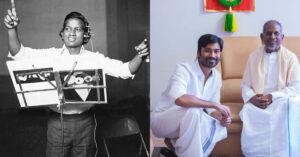200 Old Indian Films Owe Their Preservation to This Retired Fisherman in Hawaii
Thomas Daniel, a resident of Hawaii, shares why he started his YouTube channel tommydan55, which is an extensive compendium of forgotten and old Indian classic movies, and the hard work that goes behind restoring each of the 200 movies on his channel.
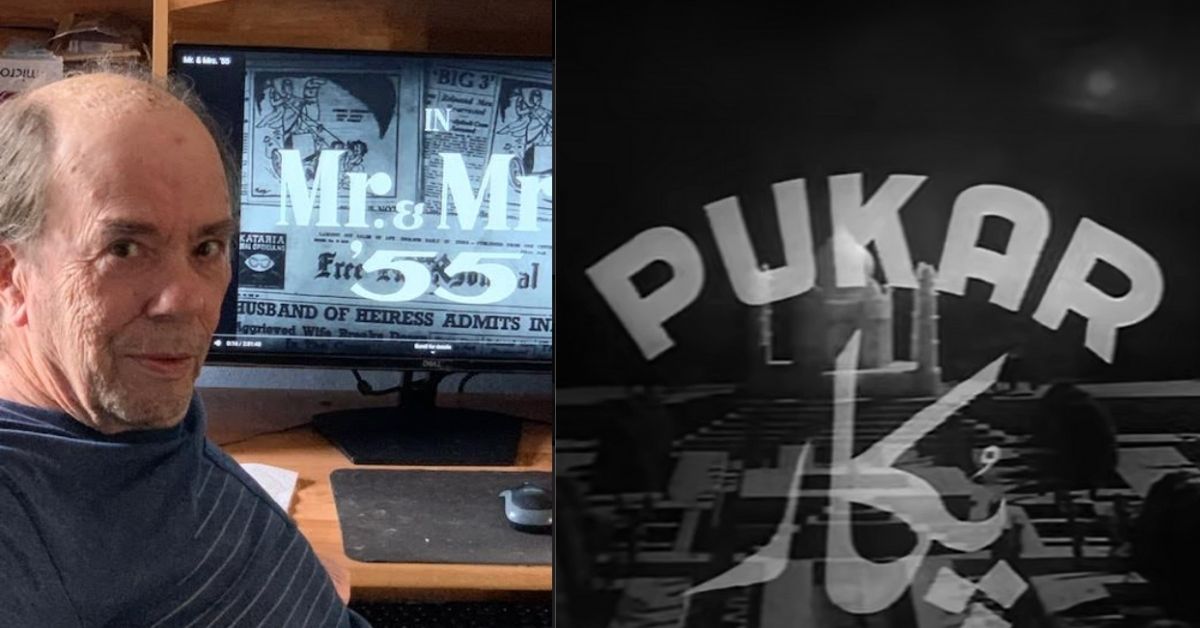
Grateful viewers often take to YouTube’s comment section to thank Thomas (Tom) Daniel for bringing their favourite movies back to life. Some recall old memories of what struck them about these films. Some relate their years-long struggles to locate the masterpieces, many of which are rare and not available in adequate quality. Some recall the songs that resonated with them, and some celebrate the actors who made the movies what they are today.
It’s not just that Tom, a retired fisherman, finds classic old Indian movies and uploads them onto his channel, tommydan55. These videos go through hours of rework and restoration, where the 73-year-old collates bits and pieces from all over — old VHS tapes, DVDs, downloaded videos, VCDs, and the like. “The goal of this channel,” he writes under one video, “is to restore films as much as possible to their condition when projected in the movie theatres of Delhi, Mumbai, Chennai, Kolkata, or Lahore, 60, 70, 80 or more years ago.”
On average, the septuagenarian, a resident of Hawaii, dedicates around 40 hours to restore one film. So far, his channel has amassed over 80,000 subscribers, and he has restored around 200 films in Hindi, Urdu, and more recently, Bengali. But for an American with seemingly no connection to India barring two visits in the 70s, where does this love for reviving old Indian classics come from?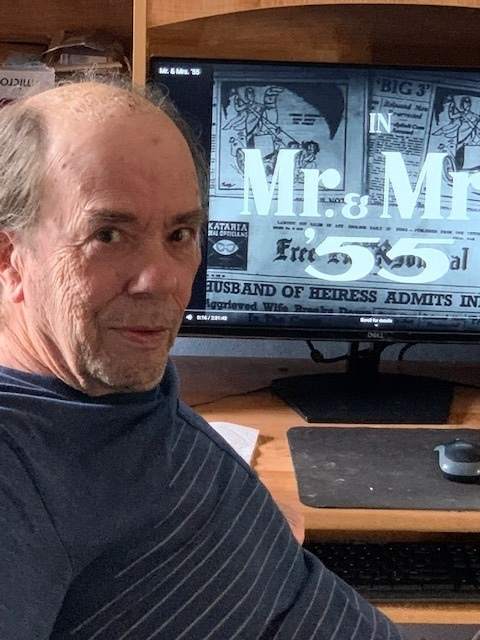
Around 15 years ago, Tom watched the milestone film Sahib Bibi Aur Ghulaam (1962) for the first time.
“For an American for whom this was his first classic Indian film, it was very exotic,” Tom tells The Better India over email. “Although Guru Dutt, like Satyajit Ray, is perhaps more accessible to westerners because they were both heavily influenced by American and other non-Indian films, SBAG is still very different from classic US films…Minoo Mumtaz’s dance is justly famous as one of the greatest Indian songs and dances ever. And I think Meena Kumari is a great actress. The idea of a village bumpkin coming to the household of a wealthy zamindar, learning the lonely wife’s story, and telling it in the film is a brilliant concept. It sounds plausible, and one is completely drawn into the story and gets lost in it like The Wizard Of Oz, I’ll never forget it.”

The magical realm of cinema
Tom’s father was in the Army, and as is common for such families, he moved around a lot. Born in Fort Benning, Georgia, he spent most of his school years in Arlington County, Virginia, where his father worked at the Pentagon. “But I live in Hawaii, and have for more than 50 years now,” he says.
He says he didn’t go to movie theatres much while growing up. “Two films I remember to this day were the ones I watched with my parents. One was White Christmas with Bing Crosby, known even today for its title song. And the other, perhaps also known for a song — Que Sera Sera, sung by Doris Day — was the [Alfred] Hitchcock movie The Man Who Knew Too Much. I heard it just a couple of days ago, and I almost choked up,” he recalls.
Movies like the Wizard of Oz, he adds, influenced not only him, but all Americans of a certain age. “It was shown on US television once a year, and for several years, I didn’t miss it. My grandmother had a whole series of Oz books, and I read them all. They were marvellous escapism for all young boys and girls.”
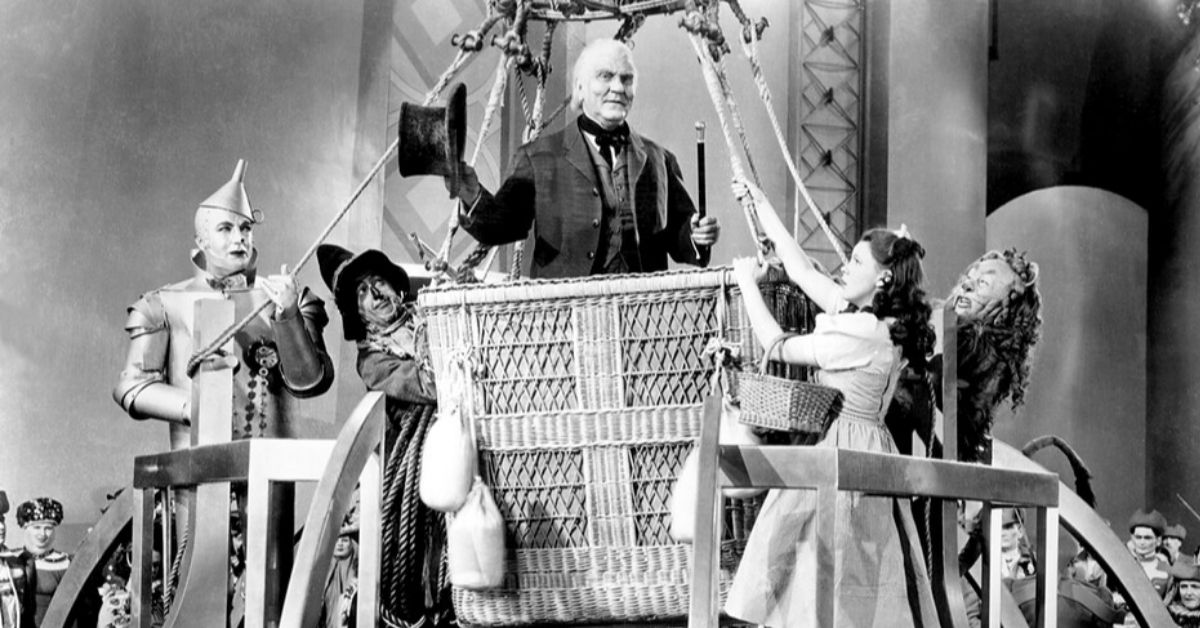
When Netflix arrived in the late 90s, Tom expanded the ambit of his film exploration, especially classic ones. He went through movies from across different countries, including Japan, Germany, France, and China. “Then I decided to tackle India, knowing nothing about its films. I stumbled upon [modern Indian studies professor] Philip Lutgendorf’s Indian review site.”
It was here that he discovered Sahib Bibi Aur Ghulam, which he rented off Netflix. “And I was hooked,” he says. “I loved American musicals with Fred Astaire and Ginger Rogers, or the Busby Berkeley musicals and all Indian films were musicals. Guru Dutt’s films integrated songs and dances better than most.”
Around nine years ago, Tom restored his first Indian film — Sohrab Modi’s historical production Pukar (1939). “It was from a VHS tape that a friend sent to me,” he says.
Behind the scenes
He further explains that because the film was taped from British television, it showed the movie at 25 frames per second (FPS). Meanwhile, movies shown in theatres are usually screened at 24 FPS. “PAL (phase alternating line) parts of the world — including India and Europe — create their television shows and DVDs at 25 FPS, which usually involves something called PAL speed up. The films speed up by about 4 per cent, and the audio usually becomes a semitone higher. It goes out of tune. I slow films back to 24 FPS and put the audio back in tune,” he notes.
He says he uses AviSynth, a video post-production tool, and Audacity for the audio.
“I don’t have access to the $20,000 software programmes that Hollywood film studio restorers use,” he says. “But they’re working with digitised reels of film, and not old VHS tapes, VCDs, DVDs, and videos downloaded from all over the place. In short, many of my sources are garbage. But I do what I can with them. Over the years, I’ve got better at it, and I can do things using AviSynth that those Hollywood guys can’t do with their fancy software.”
To further explain what goes behind the restoration process, Tom points to ‘Howrah Bridge – Before and After’, a video on his homepage that he uploaded about three years ago. Besides the FPS and audio, he also adjusts the aspect ratio and removes logos.

“For millions of Indians who don’t understand the Hindi language of most of these films, and many millions elsewhere who might want to know more about Indian movies, English translations are provided whenever possible,” he explains in the video, adding that around 90 per cent of his videos are subtitled with the help of eager contributors.
He also combs through these films three separate times, frame by frame. He removes scratches, dirt and other artefacts on the frames, and tries to smooth over missing frames, with special attention to the opening credits. Then, he fixes the brightness and darkness levels, corrects volume levels, edits the subtitles to near perfection, and then reviews the final product carefully to weed out other errors.
“Some things can’t be fixed with AviSynth filters,” he notes. “In those cases, I have to fix individual frames, sometimes several, using a photo editor. I extract a film frame, stick it into the photo editor, do what has to be done, and then put it back into the film. It’s time-consuming, but some of the stuff I do can improve a film, or a part of it, tremendously.”
Here’s an example of a song from the 1949 film Andaz, which Tom says had suffered from serious chemical decomposition.

Grainy and poor quality content can put off even the most ardent film connoisseur. DVDs and CDs often retain large logos, flickering, poor quality frames and the like, all of which Tom is determined to do away with while restoring movies.
Moreover, even as increased focus is given to colourising Indian classics, the state of old films with low budgets and less successful theatrical runs remains abysmal. The Hindu states that presently, India has the lowest survival rate of cinema (8-10 per cent). “This is even though cinema, its images and sounds, stars, singers and stories inundate our everyday life and imagination. But when it comes to its preservation or archiving, attention and care are strikingly lacking,” the report adds.
The beauty of Tom’s channel lies in the fact that these movies do not exist behind barriers of paywalls, and are not limited to physical screenings. While comprehensive compendiums like Indiancine.ma exist to provide digitised versions of old films, tommydan55 proves as a bridge to connect nostalgic Indian audiences with the cinema they loved and grew up with, with only the click of a button.
A repository of rare Indian gems
Corey Creekmur, director of the University of Iowa’s Institute of Cinema and Culture, told Caravan Magazine that Tom’s uploaded version of Kaagaz ke Phool (1959) was the first time a widescreen version of the film was made available and had been “long reported lost, and never previously available for home viewing”.
Meanwhile, Tom says, “I judge the rarity of a film by the number of times it has been stolen by other channels. There are countless films and songs on other channels that started life on mine. Some channels are built almost exclusively from my videos.”
Some gems on tommydan55 include the 1936 remake of Sarat Chandra Chatterjee’s Devdas, the pre-Partition blockbuster Khazanchi (1941), Brij Rani’s 1951 film Damad, historical drama Pyaar ki Baatein (1951), and Meena Kumari’s Daera (1953), which is said to be loosely based around her own love story with co-star and director Kamal Amrohi. Tom’s repository also includes Rattan (1944), which is credited for cementing Naushad Ali’s place among the top music directors of the country.

Besides Sahib Bibi aur Ghulam, Dev Anand’s cult classic Guide is one of Tom’s favourite movies. However, strict copyright laws have prevented him from uploading restored versions of these movies. From his channel, he picks Baazi (1951) and the 1958 crime thriller Howrah Bridge.
“One of my favourite genres is film noir. With them, there’s no real good or bad guy, no white and black. The cameraman’s lighting becomes very important, as much of the story is told through the lighting. Baazi is one of the best examples of that. It’s a film where Dev Anand came into his own.”
“Howrah Bridge is also one of my favourites,” he adds, “partly because of KN Singh’s presence as the bad guy, and mostly because of Madhubala. I’m among those who think she was the most beautiful woman to ever grace the Indian silver screen. And like Marilyn Monroe, her beauty sometimes kept her from being credited for her acting abilities.”
Of his love for Indian cinema’s music, he highlights the video for Udhar Tum Haseen Ho from Madhubala and Guru Dutt’s Mr and Mrs 55 (1955). “I think Guru Dutt makes a good partner to Madhubala. This is one of the best love songs in all of Hindi film history, in my opinion.”
As great as Tom’s work is in restoring Indian films, it does not come without its own set of challenges, the most bothersome of which are copyright issues, he notes. He is often served copyright notices by Indian companies. Since he began uploading Bengali films, he says he has been served several notices by Angel Digital, a media company.
This, he notes, was particularly cumbersome while uploading Sharey Chuattar, the 1953 Bengali comedy film. “Try and find another complete version of the film,” he tells me. “There are plenty of songs and scenes and even a ‘mini’ version of the film. Angel shuts the complete film versions down. But I was able to fight them off.”
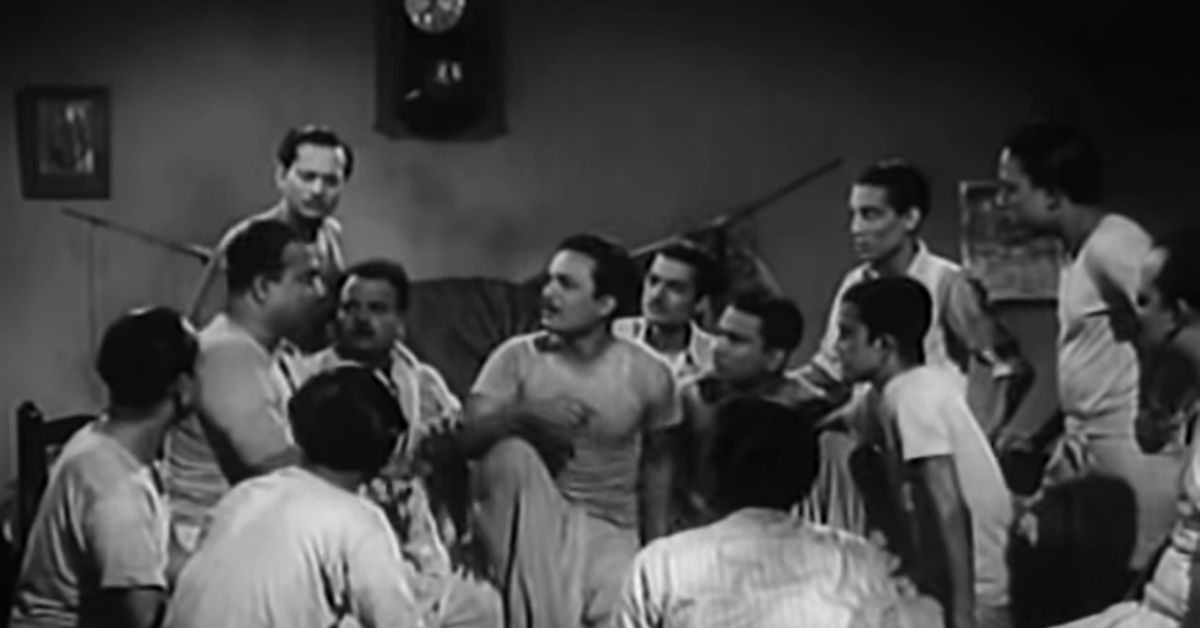
Such threats and notices from large production and media companies do not deter Tom, who often sends counter-notices in return. For Sharey Chuattar, he says he was served 10 “fraudulent” copyright claims. But after a few months, he was able to win the right to have the film viewed on his channel.
“It’s funny because when I began working on it, I only knew that it was rated highly on IMDB and that there was no version of it on YouTube. But I quickly realised the movie was a gem. The media company fought long and hard to keep me from making it available, but I have the law on my side.”
Tom also runs tommydan333, a YouTube channel where he uploads old Indian and Pakistani songs. He also owns tommydan22, or the ‘Edwina channel’, dedicated to Edwina Lyons, an Anglo-Indian background dancer in the 50s.
You can visit Tom’s main channel here.
Edited by Yoshita Rao
Sources:
The Hindu
Caravan Magazine
Philip Lutgendorf’s Indian review site:
https://indiancinema.sites.uiowa.edu/films
This story made me
- 97
- 121
- 89
- 167
Tell Us More
We bring stories straight from the heart of India, to inspire millions and create a wave of impact. Our positive movement is growing bigger everyday, and we would love for you to join it.
Please contribute whatever you can, every little penny helps our team in bringing you more stories that support dreams and spread hope.








